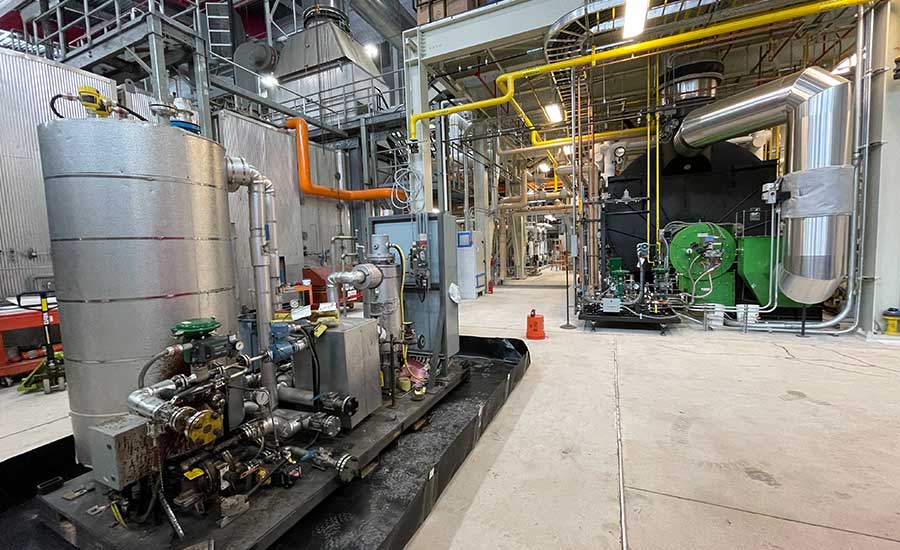What is the best way to reduce dependence on fossil fuels and help reduce greenhouse gas emissions? Is it transitioning power generation to solar? Using alternative fuels, like those derived from plants or food waste? Or how about switching over to wind-generated energy?
The truth is, there is no renewable energy “silver bullet” in the quest for sustainability. The key is to understand a project’s power generation needs, look at all the solutions available, and evaluate what each one offers. The real solution might just lie in the diversification of available power sources.
There’s no denying the world is heavily dependent on fossil fuels for energy, and almost every business has made it a priority to reduce that dependency in some form or fashion. We all want to find the right green solutions; indeed, it is imperative that we transition toward a more sustainable and diverse energy mix to reduce our impact on the environment. Diversifying our power generation is essential for positive environmental impact, technological progress, and sustainable solutions for energy creation.
Alternative Fuels
Numerous alternative fuels have been developed that provide carbon-neutral solutions for boiler room power, and many can even be used in standard oil-burning systems with minimal adaptations. These clean-burning, versatile alternative fuels include B-20, B-100 bio-diesels, BRO-500 bio-residual oil (which is 95% carbon-free), and renewable fuel oil (RFO, which is produced from wood waste). Implementing alternative fuel options like these can help businesses to comply with increasing regulations on carbon emissions without having to invest new boilers.
Green Hydrogen
Recent breakthroughs in green hydrogen make it a compelling option for reducing dependency on fossil fuels. Green hydrogen is formed purely from electrolysis, where water is “split” into its component molecules, isolating the hydrogen and leaving only O2 as a byproduct. Given its simple production and indefinite sustainability, green hydrogen has proven to be three times as powerful as current fossil fuels. It has been used most commonly in large-scale production or manufacturing applications that would normally be high-carbon expenders, but it’s also being implemented in smaller scale operations to help them meet their sustainability targets and even qualify for energy-related financial incentives.
On the downside, hydrogen can be relatively unstable. It is much less dense than natural gas, meaning it must be cooled to subzero temperatures in liquid form to allow for safe transit from plant to plant. It is also flammable, requiring high expenditures to ensure no explosive mishaps occur during transit. Unless it is produced as a waste byproduct at a chemical plant, it can cost up to three times as much as fossil fuels and natural gas to treat and transport safely.
Because of its instability, green hydrogen is “blended” with natural gas and used as fuel. The blending process is delicate and yet is essential in keeping steady combustion and avoiding expensive outages.
Electrification
Broadly, electrification refers to the process of replacing fossil fuel-burning equipment with equipment that runs on electricity. For heating purposes, it means replacing gas and oil-fired boilers and air handlers with heat pumps that run only on electricity. Steam heating systems are replaced with hot water systems, often with natural gas-fired condensing hot water boilers, for backup or for times when ambient temperatures are too low for heat pumps to operate. Heat pump-powered hot water systems can serve a single building, or the hot water can be distributed to many buildings in a campus-wide or district heating system.
Electrification is expected to significantly increase loads on the electric grids, and generating this additional electricity without burning fossil fuels is not yet feasible for big urban areas, like New York City. Real world concerns include the amount of copper needed, extensive wiring schematics, and large-scale demand that is beyond the capability of solar or wind.

In small applications, an alternative to consider when looking at strategic electrification is on-site power generation. Going “off the grid” and generating your own power is a solution that avoids the inherent pitfalls of big power grids. Experts in the field of critical data protection, for example, consider site-generated power to actually be the primary power source for vital data centers. The “grid” is considered to be the backup. It’s important to note, though, that in most situations, electricity is usually created from reliable fuel-powered generators.
Solar
Solar remains a tried-and-true source of renewable energy. It is a clean, abundant, and sustainable energy source that can be harnessed using photovoltaic cells. Solar panels can be installed on rooftops, parking lots, and other locations to generate electricity. With the cost of solar panels decreasing significantly in recent years, solar energy is becoming more affordable and accessible to everyone.
A recent solar panel implementation at a 50,000-square-foot manufacturing facility in Connecticut is a great representation of energy diversification in action. For heating, the facility already utilized Bio-Residual™ Oil (or BRO) — a fuel that is made from an array of unexpected biological materials, such as agricultural waste, animal fats, and even recycled cooking oil. With the addition of the solar panels, the facility is now able to generate its own electric power as well.
Diversification of our energy mix is good for business, the environment, and the nation. Because fossil fuels are a finite resource, access to them is inherently limited. Foreign sources, in particular, can be affected by political instability and market fluctuations. In contrast, renewable energy sources are abundant and sustainable. When we think about energy diversification, we should ask ourselves, “When are liquid fuels, gasses (natural or byproduct), or electricity best utilized for power generation, and at what scale?”
Energy diversification even supports the economy. The renewable energy sector is one of the fastest-growing industries globally, and it has the potential to create millions of jobs in the coming years. By investing in renewable energy, we can stimulate economic growth, create new job opportunities, and reduce dependence on foreign oil.
To invest in a sustainable future, businesses must look at a number of different solutions, fuels, and energy sources. A holistic approach allows a company to find the best fuel for each application without becoming overly dependent on a single source or solution. Approaching each application with an open mind is the key to success.
By Ruth O’Donnell, marketing and communications manager, Preferred Utilities Manufacturing




